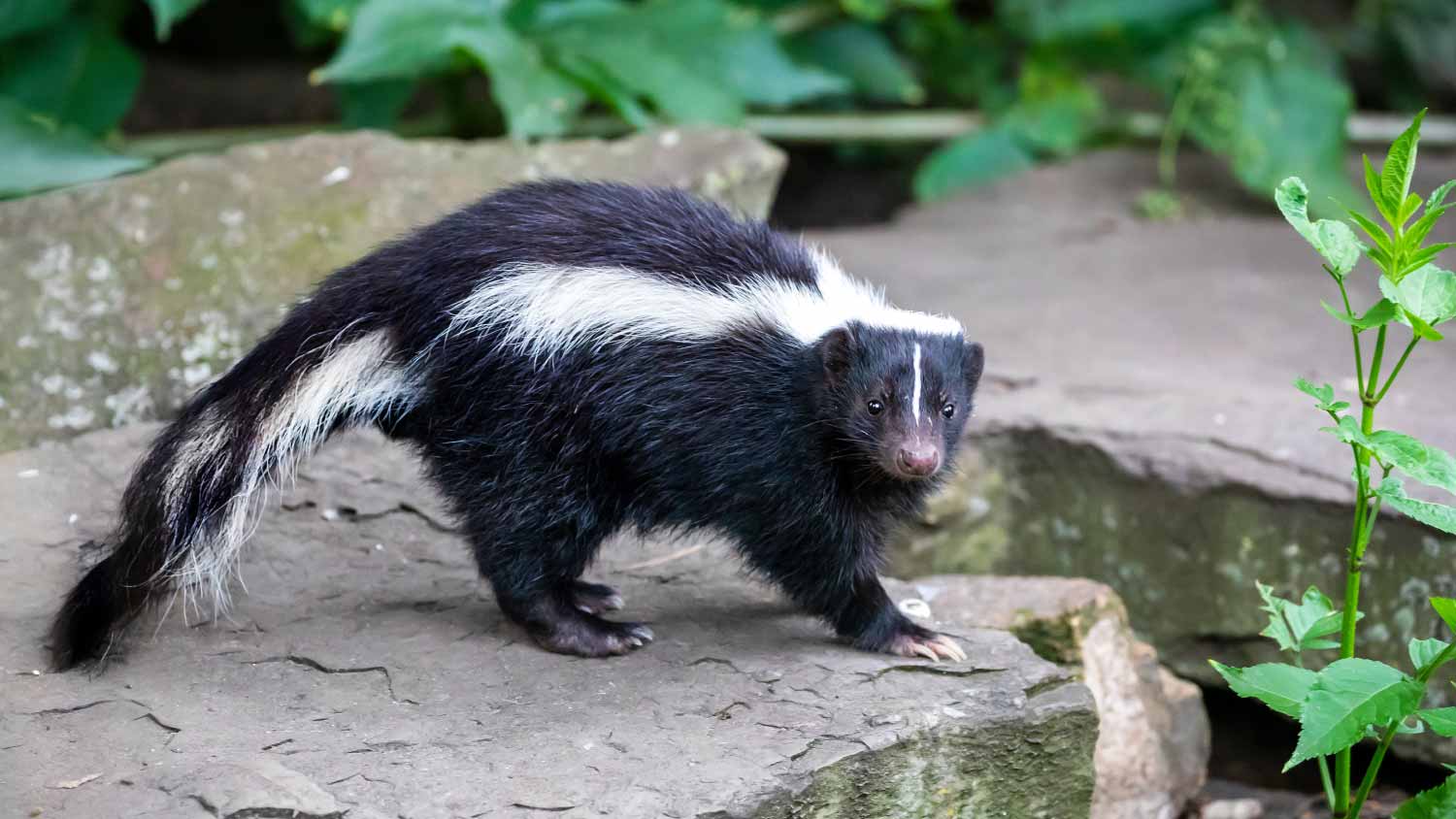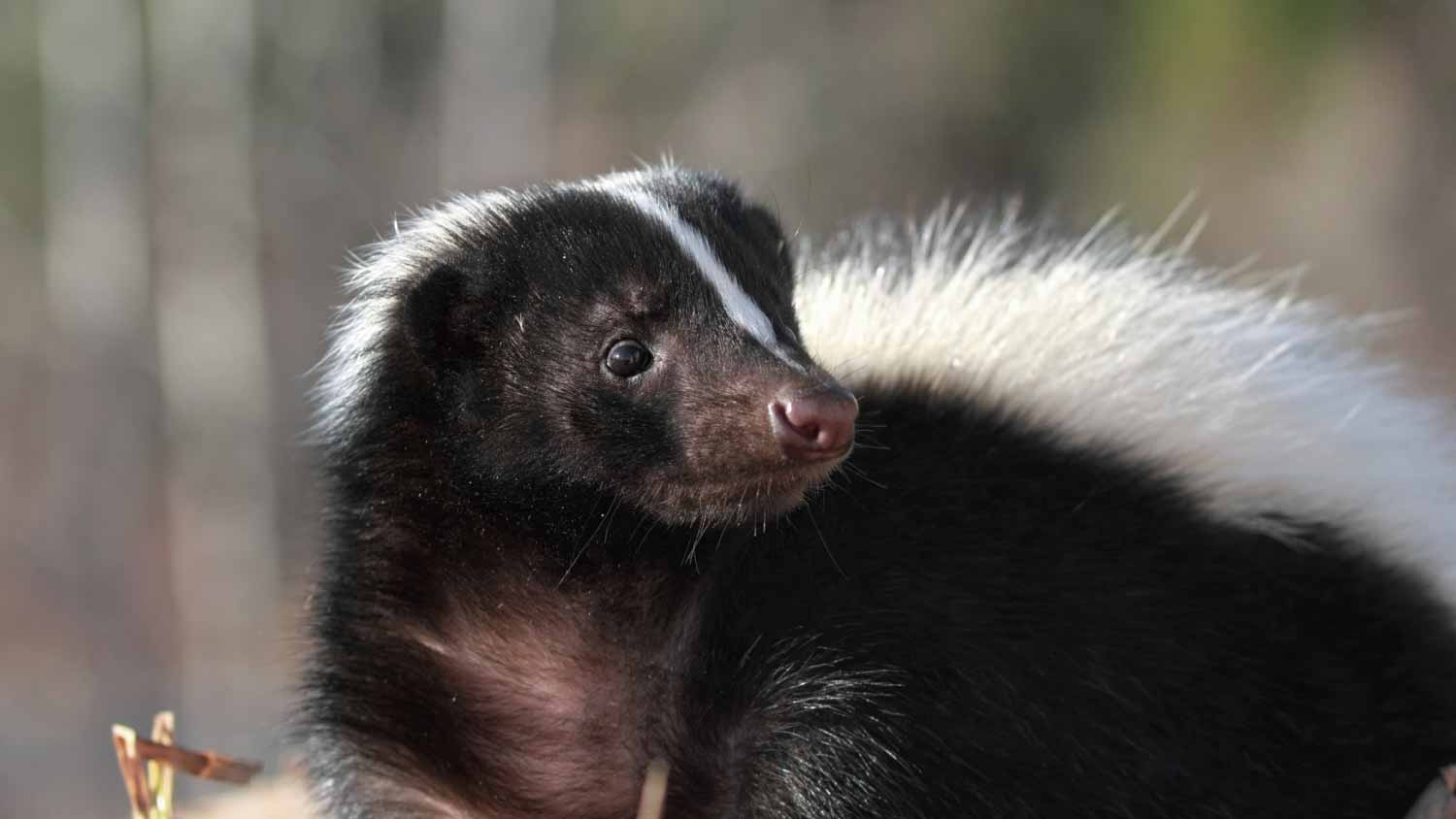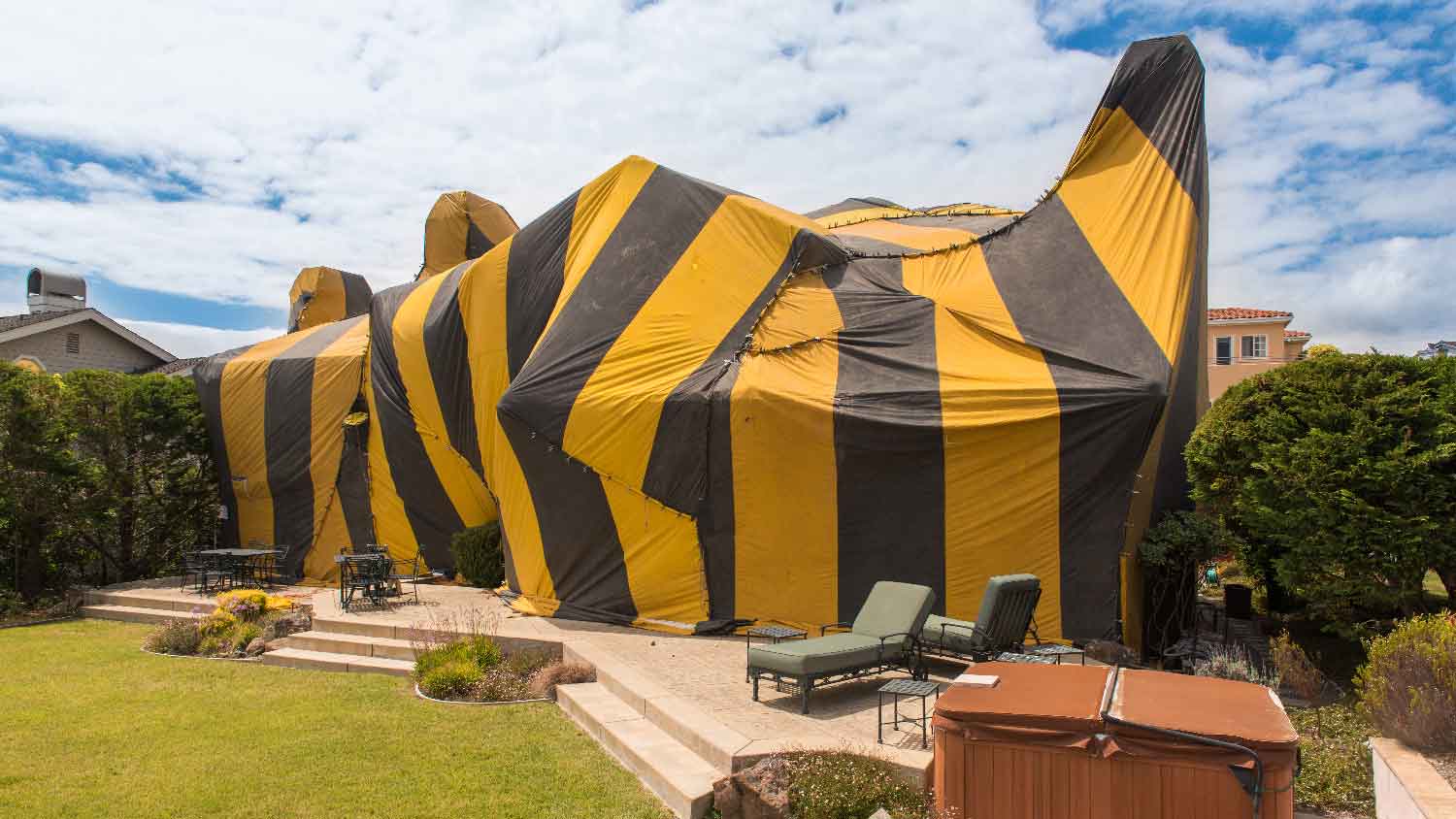
Bats may have their benefits, but you don't want them taking up residence in your home. This guide will help you understand bat removal costs.
Here's how to sniff out what type of skunk is living in your neighborhood


North American skunk species can be striped or spotted, and they range in size from 14 to 37 inches long.
The striped skunk is the most common species in North America, with up to 13 living per square mile.
Skunks are omnivores that love easy meals, so secure trash cans, pet food, and compost to keep them away.
All skunks are nocturnal, so if you see one in daylight, it could be sick or feel threatened.
Depending on your location, humane skunk removal costs between $300 and $600.
When it comes to skunks, their reputation—and certainly their hard-to-remove smell—precedes them. While they all share the ability to produce that identifying odor, there are many different types of skunks, ranging from spotted to striped to hog-nosed. Use this guide to help you spot and identify the most common species of skunks in the U.S.

The striped skunk is the most common type of skunk in North America. According to the National Wildlife Federation, they are highly adaptable and abundant—for every square mile you can find anywhere from five to thirteen striped skunks. This species of skunk has adapted to thrive in almost any environment, from heavily wooded areas to urban settings. Their resilience comes, in part, from their ability to scavenge (and digest) a wide variety of foods, including human garbage, insects, and plants. They can even adapt to a desert climate, but their favorite habitat is suburban neighborhoods that have plenty of trash cans to scavenge.
The striped skunk is also highly recognizable (think Pepé Le Pew or Flower from Bambi). When identifying the striped skunk, look for black fur with a prominent white stripe or stripes down their backs. Striped skunks are around the size of a cat, and you will most likely see or hear them rooting through your garbage or compost at night.

Often mistaken for striped skunks, hooded skunks live primarily in Mexico and the southwestern United States, including southeastern Arizona, southwestern New Mexico, and southwestern Texas. According to Texas Tech University’s Natural Science Research Laboratory, this white-sided skunk prefers to live along stream courses, particularly on rocky ledges or among streamside vegetation. These skunks love to eat insects and food waste, and they’re usually spotted on the hunt just after sunset.
Hooded skunks are bigger than their striped cousins, typically between 22 and 31 inches long. The species also has quite a lot of variation in terms of the striped patterns on their fur. They usually have a ruff of white fur around their necks, which gives them a “hooded” appearance. Any of the following fur patterns can occur on hooded skunks: primarily black fur with two stripes running down their backs to the tail, primarily black fur with one large white stripe running down the middle of the back through the tail, and a combination of one large white stripe and two smaller white stripes, all running down their back and tails. Hooded skunks can even morph their fur patterns depending on their age or desire to attract a mate.

Although the Eastern spotted skunk is common in the eastern regions of North America, they can be seen as far north as Minnesota and as far south as Central America. Unlike other types of skunks, they prefer denser wooded areas to suburban or urban environments, so you are less likely to see them in your yard. However, the males, in particular, wander during mating season—primarily March and April—so you’re most likely to see this type of skunk in urban or suburban areas during those months.
You’ll know if you spot an Eastern spotted skunk on your property by the distinct, irregular black-and-white pattern on their backs that looks like spots or broken stripes. Their tails are usually white, and they typically have a white spot on their foreheads. They range in size from 18 to 27 inches long. You might also recognize their distinct “handstand” maneuver—the males stand on their front hands and spray (up to four feet) when threatened.

This type of skunk is primarily found throughout various habitats in the Western region of the United States. Like the striped skunk, Western spotted skunks are very adaptable and live in a wide variety of areas, ranging from the desert and the woods to urban forests and the suburbs. The Western spotted skunk is often mistaken for the striped skunk, but the main difference is that it’s smaller at only 14 to 18 inches long.
They typically have red, brown, or black fur with three white stripes that run lengthwise down the front part of their bodies, as well as three white stripes that run vertically on the hind part of their bodies. The stripes are so varied that it gives the appearance of spots. Some other identifying traits include short, round ears, a black tail with a white tip, and white spots between the eyes and below both ears.
The adult Western spotted skunks tend to be more solitary than other species. So if you see a lone skunk wandering at night with the specific “spotted” pattern, it’s very possible that it’s the Western Spotted Skunk.

This critter’s territory is in both Central and North America, but it’s primarily found in the Southwest region of the United States, specifically southeastern California, New Mexico, Arizona, and Texas. The American hog-nosed skunk is the largest North American skunk, extending between 17 to 37 inches long.
This type of skunk was named after its broad “hog-like” nose. It’s also referred to as the “rooter skunk” for its habit of rooting out food from under rocks and other obstacles. Sometimes, you can tell that a hog-nosed skunk has been on your property because there will be little patches of ground that appear plowed.
Hog-nosed skunks can be identified by their noses (if you can get close enough to see it) but also by the broad, white stripe that runs from the top of their heads all the way to their tails. The American hog-nosed skunk’s body fur is black, with an entirely white tail.
There are many different types of skunks, but they all share some common characteristics. Here are some of the common skunk behaviors and traits:
Omnivores: All skunks are omnivores and eat a variety of foods, including animal meat and vegetation. In other words, they like to rummage through your garbage, but they also eat insects like grasshoppers and bees.
Nocturnal: Skunks are nocturnal, which means you probably won’t catch them in the act—not that you want to!
Smelly when provoked: A startled skunk can emit a strong, unpleasant odor. It’s their defense against predators, and skunks only use their noxious spray when they are scared or agitated.
Fortunately, skunks are gentle creatures, and you can keep skunks away in an equally humane manner. Start by removing the easy temptations from your property, like food waste and pet food. Also, cover up any openings, crawl spaces, and outbuildings to prevent skunks from setting up a den.
If a skunk has already moved into your property and started denning, simply fill the den (when the skunk isn’t in there) with rocks, pine straw, or leaves. You can also try noise repellants or motion-sensitive lighting since skunks don’t like noises or too much light.
If removing food, blocking a den, or other tactics aren’t working, you can hire a local pest control company offering skunk removal services to remove the skunks safely. Skunk removal costs range anywhere from $300 to $600, depending on the area.
Amber Guetebier contributed to this article.
From average costs to expert advice, get all the answers you need to get your job done.

Bats may have their benefits, but you don't want them taking up residence in your home. This guide will help you understand bat removal costs.

Your mosquito misting system cost will vary based on factors such as the size, type, brand, and more. Find out what the budget for this system looks like.

Tenting is a costly but effective way to exterminate termites. Learn the average termite tenting cost and everything that will factor into your budget.

Wondering how to kill stink bugs—and keep them away, for good? Read on for a DIY guide on how to get rid of stink bugs.

Honey bees are crucial to the ecosystem, but it’s normal not to want them near your space. Learn how to get rid of honey bees without harming them.

Pest inspection costs depend on the type of inspection, location, and other factors. Learn more about how much pest inspections cost with this guide.